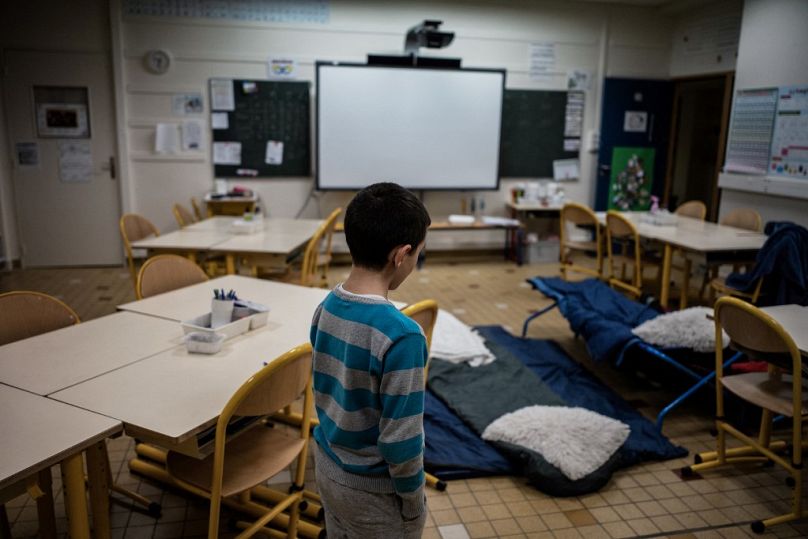
A country’s income does not determine its level of child poverty. This seems to be the outcome of UNICEF’s latest report on countries within the EU/OECD, with a surprising leader topping the polls: Slovenia.
The central European country, home to around two million people and known for its mountains, lakes and ski resorts, noted just 10% of children living in poverty conditions, a drop of 31% since 2014.
Slovenia was followed by some other Eastern Bloc countries like Poland and Latvia in the UNICEF Innocenti rankings, which took into account a country’s income poverty rate for children and their success in reducing child poverty in a time of economic prosperity (2012–2014 to 2019–2021).
More common names you would maybe expect to hear, such as Japan and Ireland, came in only 8th and 9th on the list respectively. France, Spain, and the United Kingdom are close to the bottom of the rankings of 39 countries, with Britain only bettering Turkey and Colombia.
The UK has double Slovenia’s child poverty rate and was the country that saw the biggest increase by far, up 19%. Nordic countries such as Norway, Finland, Sweden, and Denmark came in around mid-table.
What is Slovenia doing right?
According to UNICEF, there are some key aspects to eradicating child poverty in a country. These include – among other things such as investing in education, health and nutrition – giving families cash benefits, introducing labour market reforms and providing adequate social protection.
The latter is particularly important, as children living in poverty are generally in a more vulnerable situation.
Slovenia has one of the highest minimum wages in Europe and provides free kindergarten to children, two aspects which could be key to its success. In Poland, the government’s decision to increase cash benefits for families has helped to reduce child poverty significantly.

But these, says Gwyther Rees, Social & Economic Policy Manager at UNICEF, “need to raise at the same rate as prices.”
“Free school meals are also a great initiative,” he explains, “because they assure families that there will be a daily plate of food on the table for their children, and therefore one less thing to worry about.”
So-called family-friendly policies are also essential if countries are to meet the challenge of the Sustainable Development Goals: to end poverty in all its forms, everywhere – including in rich countries.
These can include adequate parental leave (paid maternal and paternal leave), flexible working options and access to vocational training for those parents who wish to enter or re-enter the labour market.
What effects can poverty have on a child?
Prolonged periods of poverty can have a particularly corrosive effect on a child’s life. For example, children who experience persistent poverty are more than twice as likely to have emotional and behavioural difficulties compared to those who experienced poverty at one point in time.
In 27 EU countries, around one in eight children live in persistent poverty.
“This can then lead to difficulties in education or in terms of employment,” explains Rees, one of the main authors of the UNICEF report.
In some countries, research indicates that life can be eight to nine years shorter for a child born in a poor area than a child born in a wealthy one.
But Rees also emphasized the short-term effects poverty can have on childhood.
“Imagine being embarrassed to bring your classmates back to your house,” he says, pointing out that this, in general terms, is known as social exclusion.

Inequalities in child poverty
In the EU, 37% of children whose parents were migrants lived in income poverty compared with 15% of children whose parents were citizens of the country they resided.
“Roma children and Albanian migrants are the two most vulnerable groups in Slovenia,” the Minister of Labour, Family, Social Affairs and Equal Opportunities of Slovenia, Luka Mesec, told Euronews.
According to recent data, one in two Roma and Traveller children surveyed in 2021 lived in severe material deprivation. Other groups more at risk include indigenous children, those who come from racial or ethnic minorities, and children with disabilities.

Where you live also matters, as inequalities between types of geographical areas also persist. For example, despite progress in some countries, there are still substantially higher rates of poverty in rural than in urban areas in many European countries.
But, in the United Kingdom, the four local areas with the highest child poverty rates are in all in urban areas.
There are also variations in poverty rates among different household types. On average, a child living in a one-adult household is more than three times as likely to live in poverty as a child living with two or more adults.
What more can be done?
Overall, in 40 countries of the EU and Organisation for Economic Co-operation and Development (OECD) for which data was available, poverty dropped by 8% over a period of about seven years.
“In other words, 6 million fewer children lived in poverty in 2021 than in 2014,” Rees told Euronews.
“But much more can still be done,” he adds.
From 2012 to 2019, general prosperity presented countries with a golden opportunity to address child poverty. The figures in the UNICEF report show that some countries seized this opportunity, while others let it pass.
For those that did, such as Slovenia, “housing is next on the agenda,” says Luka Mesec, adding that they are using Austria’s public housing programmes as a reference.





